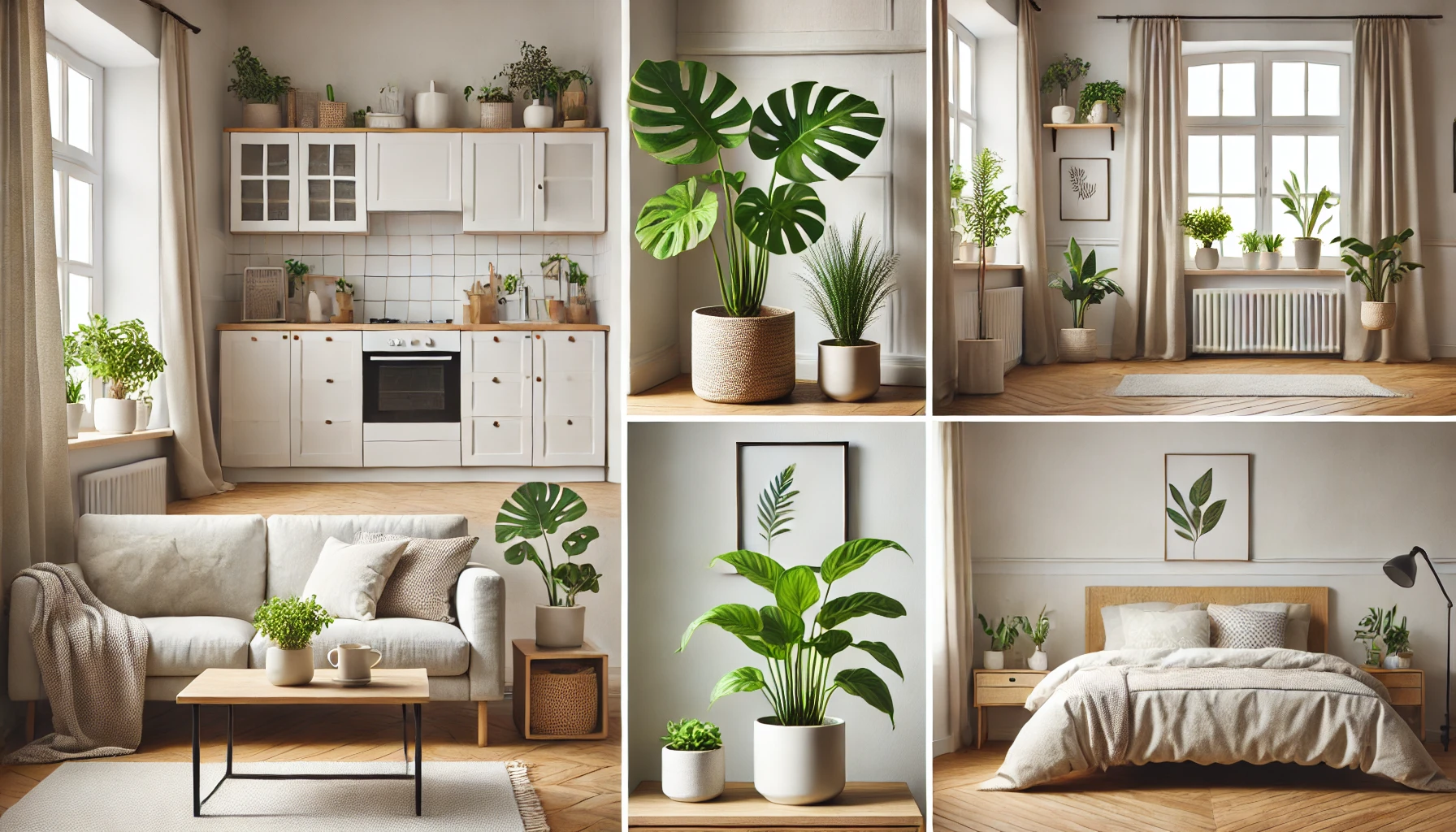Adding plants to your home can transform any space, making it feel more vibrant, inviting, and alive. However, not all plants thrive in the same environment, and choosing the right plant for each room is key to ensuring their health and longevity. In this article, we’ll guide you on how to select the perfect plant for every part of your home, based on light, humidity, and functionality.
Benefits of Choosing the Right Plant
Matching plants to their ideal environment enhances their growth and minimizes maintenance. The right plant can also complement your décor, improve air quality, and add a touch of natural beauty to your living space.
Best Plants for Each Room
Living Room
The living room is often the centerpiece of your home, so choose plants that make a statement while being easy to care for.
- Best Options: Monstera deliciosa, fiddle leaf fig, or bird of paradise.
- Why They Work: These larger plants add drama and fill empty corners beautifully. They thrive in bright, indirect light.
Kitchen
Kitchens are great for smaller plants and functional greenery like herbs.
- Best Options: Basil, parsley, aloe vera, or pothos.
- Why They Work: Herbs are practical for cooking, and plants like pothos can tolerate varying light conditions often found in kitchens.
Bedroom
The bedroom is a space for relaxation, so choose plants that create a calming atmosphere.
- Best Options: Snake plant, peace lily, or lavender.
- Why They Work: These plants are known for their air-purifying properties and thrive in low to medium light. Lavender adds a soothing scent that aids sleep.
Bathroom
Bathrooms are humid environments with fluctuating light levels, making them perfect for moisture-loving plants.
- Best Options: Boston fern, spider plant, or orchids.
- Why They Work: These plants thrive in humidity and add a spa-like feel to the space.
Home Office
Plants in your office can boost productivity and reduce stress.
- Best Options: ZZ plant, succulents, or philodendron.
- Why They Work: These low-maintenance plants thrive with minimal care and add a touch of greenery to your workspace.
Hallway or Entryway
Hallways and entryways often have limited light, so opt for hardy plants.
- Best Options: Cast iron plant, snake plant, or rubber plant.
- Why They Work: These plants are tolerant of low light and help make a great first impression.
Factors to Consider When Choosing Plants
Light Availability
Assess the amount of natural light each room receives throughout the day. For rooms with bright, direct sunlight, choose sun-loving plants. For low-light spaces, select plants like snake plants or ZZ plants.
Humidity Levels
Humidity plays a big role in plant health. Tropical plants like ferns and calatheas thrive in high humidity, while succulents and cacti prefer dry conditions.
Room Size
Consider the scale of your space when selecting plants. Large plants work well in spacious rooms, while small, compact plants are ideal for tight corners or shelves.
Aesthetic and Functionality
Choose plants that complement your room’s décor and serve a purpose, like purifying the air, reducing stress, or providing fresh herbs for cooking.
Tips for Plant Placement
- Group Plants Together: Grouping plants of varying heights creates a visually appealing arrangement.
- Use Plant Stands or Shelves: Elevate smaller plants to eye level to add depth to your décor.
- Avoid Drafty Areas: Keep plants away from air conditioners, heaters, or drafty windows.
- Rotate Your Plants: Turn your plants every few weeks to ensure even growth and prevent them from leaning toward the light.
Low-Maintenance Plants for Busy Lifestyles
If you’re short on time or new to plant care, consider low-maintenance options like pothos, snake plants, or succulents. These plants are resilient, forgiving, and easy to care for, making them ideal for any room.
Choosing the right plant for each room ensures they thrive in their environment and enhances your home’s beauty and functionality. By considering light, humidity, and your personal style, you can create a harmonious space filled with lush, healthy greenery.
